
Deutzia: when and how to prune it?
All the good practices and tips!
Contents
The Deutzia are beautiful bushes with a romantic appearance, whose flowering is extremely generous, covering the branches in spring. White, with varying shades of pink or purple, with single or double flowers, these plants come in dwarf varieties that do not exceed 50 cm, up to small bushes of 3 m, making them easy to integrate into any garden, even the smallest. Truly very easy to grow, adaptable and hardy, they are ideal in a border, as stand-alone specimens, or even in a flowering hedge or in pots on a terrace. Their maintenance is limited to annual or biennial pruning, the principles of which are very simple. Discover all the best practices for pruning a Deutzia, and some tips to ensure it blooms every year with as much grace!
Why prune?
Pruning a bush has several objectives:
- thinning its branches to allow air and light to penetrate the heart of the plant
- to restore a harmonious shape and rebalance it
- encouraging the growth of new branches that will bear future flowering
- possibly, to give space and light to neighbouring plants
Read also
Deutzia: planting, pruning, careWhen to prune Deutzia?
As it flowers at the end of spring, Deutzia is a bush that should be pruned just after flowering, which is generally between June and July depending on the species, varieties, and climate.
However, there is an exception. Deutzia setchuensis ‘Crymbosa’ is a species that has the unique characteristic of flowering from June to October. It makes sense to wait until the end of flowering to prune this variety, specifically in autumn.
This pruning can be done every year or every two years, but avoid allowing the bush to develop too much old wood.
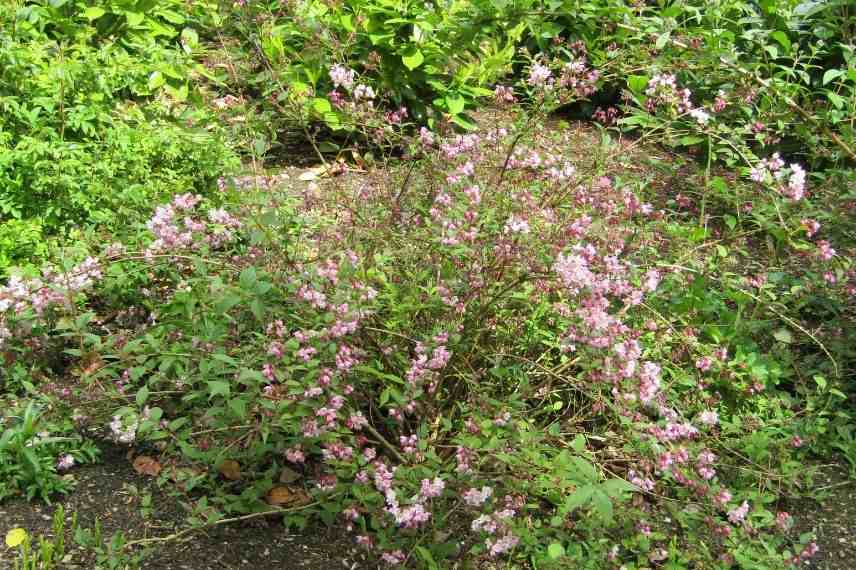
A weak Deutzia requiring pruning (photo Leonora Enking – Flickr)
Discover other Deutzia
View all →Available in 1 sizes
Available in 1 sizes
Available in 0 sizes
Available in 2 sizes
Available in 2 sizes
Available in 3 sizes
Available in 2 sizes
Available in 3 sizes
Available in 1 sizes
Available in 2 sizes
How to prune?
Maintenance Pruning
- Identify the branches that have flowered, then trace back to their base until you reach the first lateral branch that emerges from it.
- After ensuring that this branch is directed outward, and using a well-sharpened pruning shear, cut just above it (about 5 mm), at an angle, so that rainwater flows away from it. If the lateral branch is not in the right direction, try the next one. If you find no lateral branches, simply cut about 1/3 of the main branch.
- Once all the main branches are pruned, identify all unnecessary branches and cut them back to the base. This may include dead wood, broken or damaged branches, spindly twigs, branches growing inward towards the bush, or those crossing or touching other branches (in this case, choose the stronger and better-placed of the two).
Deutzia is a basitonous bush, meaning it has the ability to produce new branches from its stump or from the base of the shoots. To encourage it to produce these new stems (flowering occurs on wood that is at least 1 year old), it is important to regularly remove some old branches.
To identify the age of the branches, use their colour, appearance, and texture:
– Old branches are thicker, stiffer, more or less beige or brown, and their bark tends to peel off in strips (this is referred to as “exfoliating”).
– Young branches are tender, flexible (and therefore easily breakable, be careful!), often reddish at their base, becoming greener towards their tips, and their bark is smooth.
To encourage ongoing regeneration, cut the oldest branches back to the base, using a branch cutter if necessary, without cutting more than 1/3 at a time. This way, your bush will regenerate over 3 years if you intervene annually.
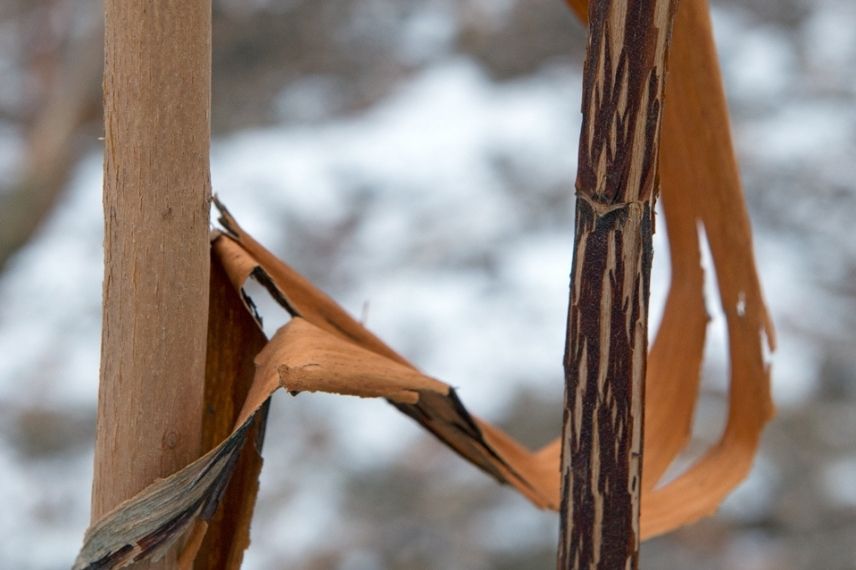
Old Deutzia branches losing their bark (photo Plant Image Library – Flickr)
Rejuvenation Pruning
It may happen that a Deutzia left somewhat unattended for a while ends up aging and flowering less. In this case, a rejuvenation pruning is necessary.
You have two options:
- Prune it as you would for maintenance pruning as described above (regeneration will then take 3 years).
- Completely cut back the bush, meaning cut all branches back to the ground. This method is quite radical, and I find it has the disadvantage of leaving an empty space, which can unbalance a flowerbed or leave a gap if the bush is part of a hedge. On the other hand, such an intervention generally deprives you of flowers the following year. However, some gardeners are fond of this method. It’s up to you to choose the one that best suits your garden and your expectations.
Read also
Deutzia: 5 lovely pairing ideasFeed after pruning
A bush expends energy to flower, so it can be a good idea to provide it with what it needs to encourage the production of new shoots, and therefore upcoming flowers.
- Start by scratching the soil at the base of the bush to aerate the earth. Be careful not to damage the roots that are near the surface during this operation.
- Add a fertiliser such as well-decomposed manure (it is available in dehydrated form, in granules) or compost, then scratch again to incorporate this addition into the top few centimetres of the soil.
- Water generously (a 10-litre watering can is ideal), but gradually, so that the water seeps gently to the roots.
- Mulch with an organic material (dry grass clippings, wood chips, commercial mulches…)
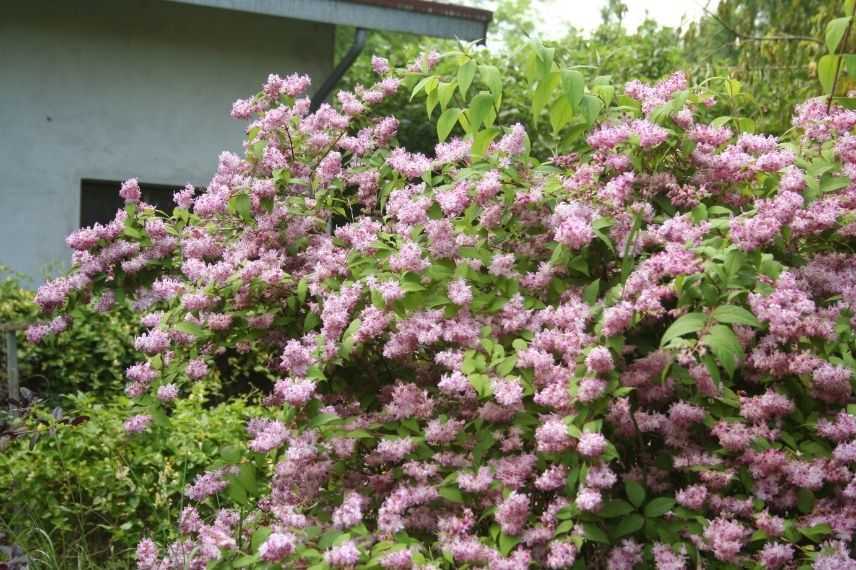
A Deutzia with beautiful homogeneous flowering.
For further reading
- Discover all our tips for growing a Deutzia in a pot
- Subscribe!
- Contents

































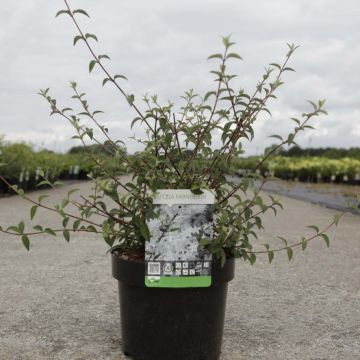
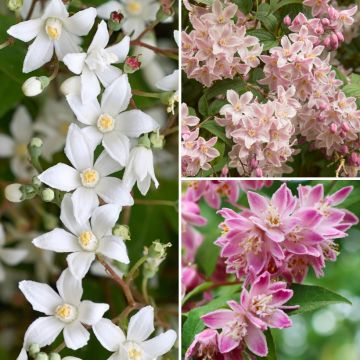

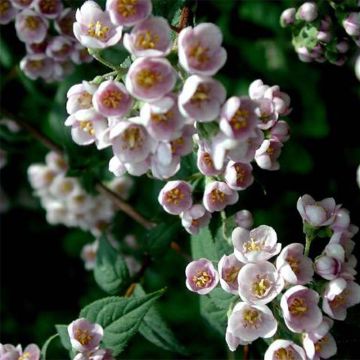

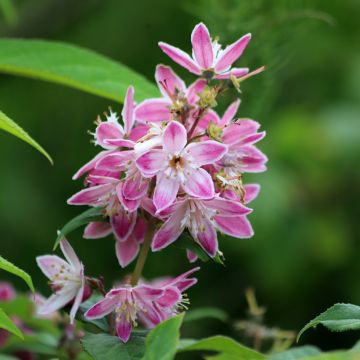

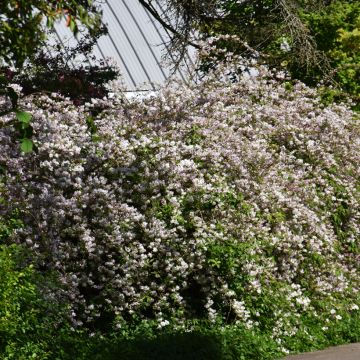

Comments